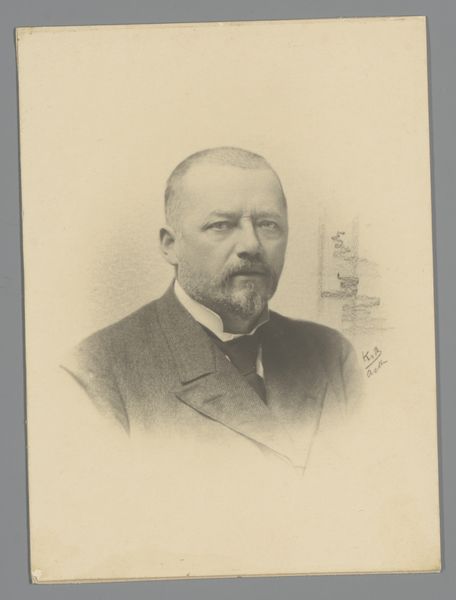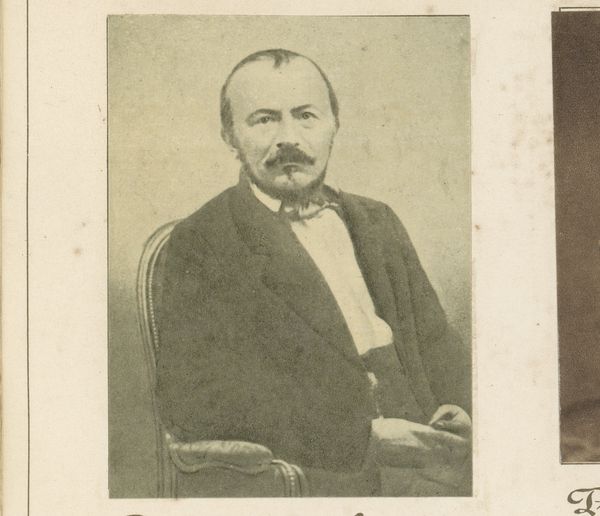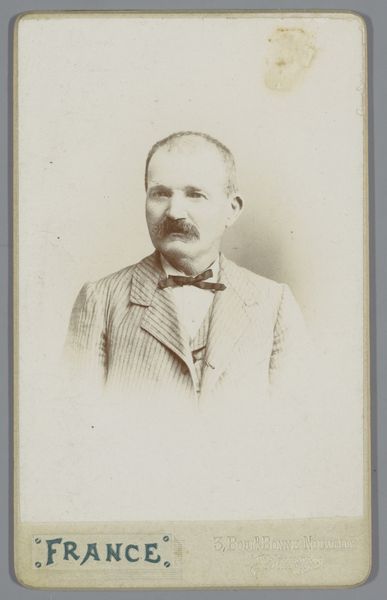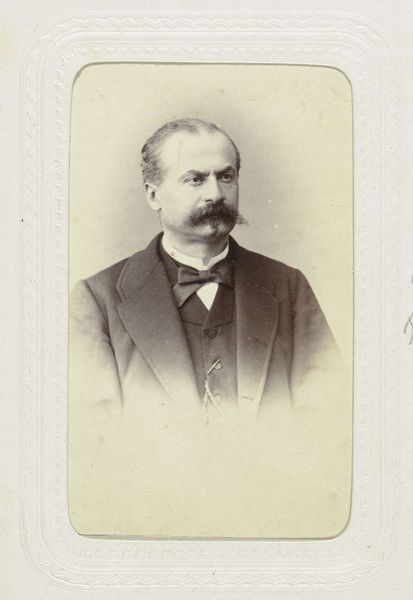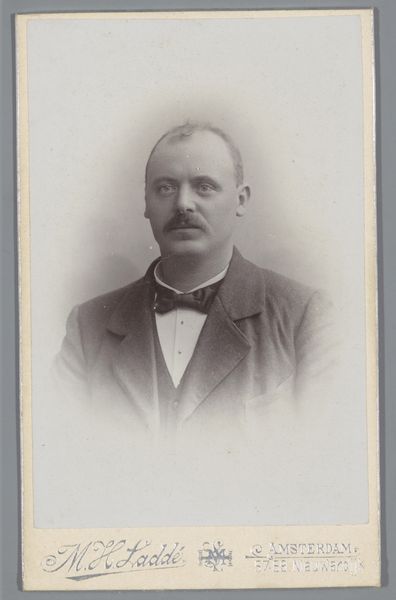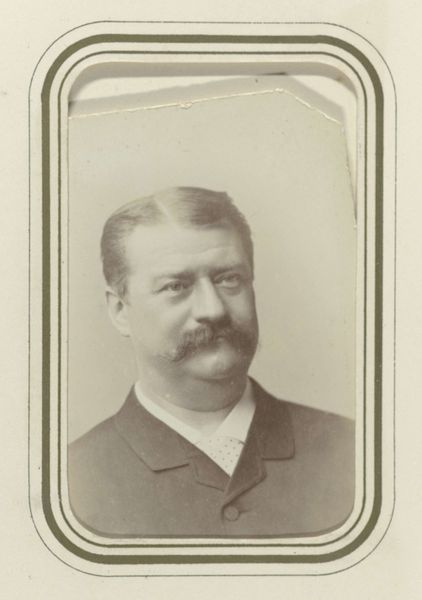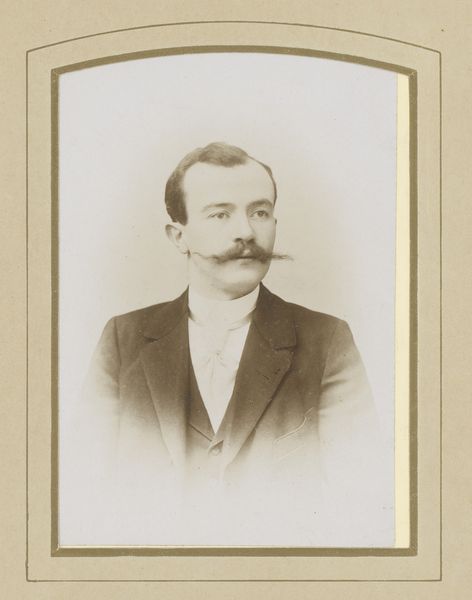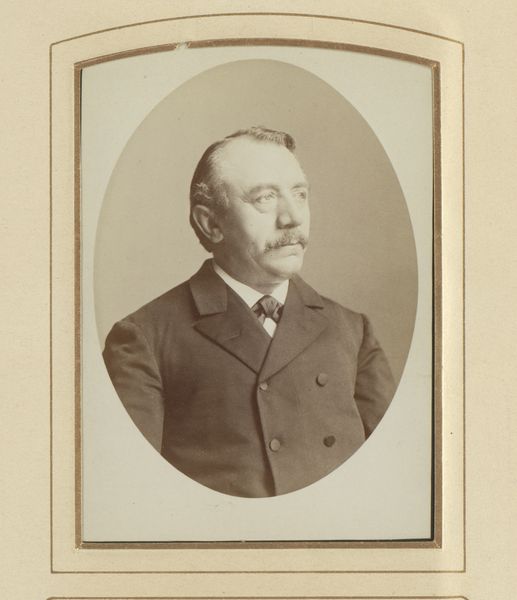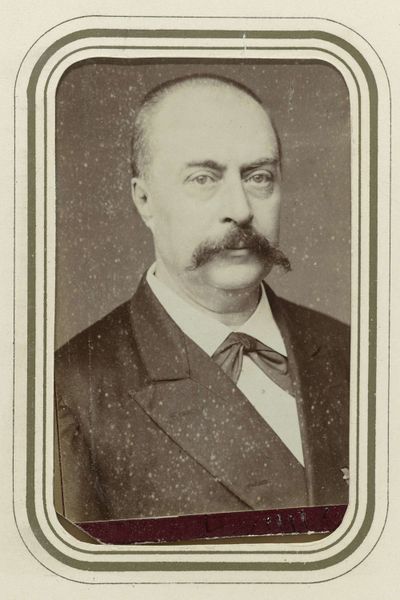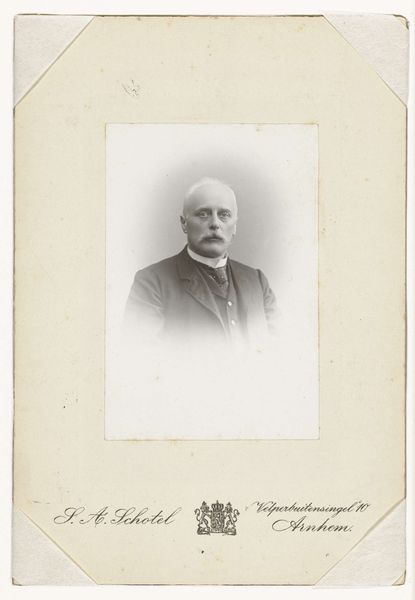
photography, albumen-print
#
portrait
#
photography
#
genre-painting
#
portrait art
#
albumen-print
#
realism
Dimensions: height 135 mm, width 96 mm
Copyright: Rijks Museum: Open Domain
Editor: This is *Portret van een man met snor*, or *Portrait of a man with a mustache*, an albumen print made sometime between 1882 and 1914, currently held at the Rijksmuseum. There's something very formal and almost imposing about this portrait, especially that intense gaze. How do you interpret this work? Curator: Looking at this portrait, I'm struck by the subtle ways in which identity is constructed and performed, particularly during the late 19th and early 20th centuries. Think about the sitter's meticulously groomed mustache, his formal attire. These elements were carefully chosen to project a certain image of respectability and perhaps even bourgeois masculinity. How might the social and political context of the time inform such presentation? Editor: That's interesting, I hadn't considered the social aspect. So, you're suggesting the photograph isn't just a representation of a man, but a carefully curated performance of his identity? Curator: Precisely. Early photography offered new possibilities of representation but was also harnessed as a tool to reinforce existing social structures and power dynamics. Do you see anything in the composition or technique that might contribute to this? Editor: I suppose the clarity and almost stark realism of the albumen print contribute to the sense of authority. The focus is entirely on him, his gaze seems very deliberate... almost confrontational. Curator: Indeed. And what about the very act of commissioning a portrait like this? What does it tell us about the subject's social standing and desire for recognition? The rise of photography coincided with a period of rapid social and political change. What stories about gender, class, and power might be embedded within the photograph? Editor: This has really changed how I see this piece! I was so focused on the man himself, that I overlooked how this connects to the broader context of society at the time. Curator: And that is the power of looking at art through the lens of social history; it encourages us to examine these historical figures and their impact beyond the surface level.
Comments
No comments
Be the first to comment and join the conversation on the ultimate creative platform.

